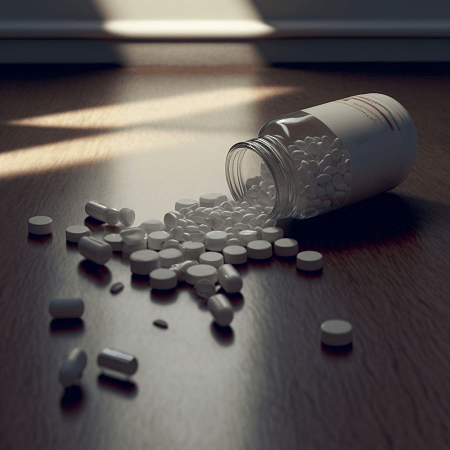Prescription drug abuse is a growing problem in the United States. The National Institute on Drug Abuse states that prescription drugs, such as opioids, benzodiazepines, and stimulants, are commonly misused. The Substance Abuse and Mental Health Services Administration reports that prescription drug misuse is impacting teens and young adults, with rates of abuse doubling in the last decade.
The current opioid crisis is one of the biggest, most widespread health crises in recent American history. Not only was 2020 a year already riddled with disruption and stress due to COVID-19 pandemic, but it also saw an alarming 41% jump in preventable opioid overdose deaths for that same calendar year. The 25-to-34-year age group experienced the highest amount – 17,344 – showing an increase of 38%. To put things into perspective: since 1999 there has been 1,312% more overdoses in this particular demographic than two decades prior! Even those above 54 years old are not immune from such danger; currently they make up nearly 72% percent of all preventable opioid related casualties. Thankfully though children younger than 15 suffer few or no fatalities at all.
In this article, we will explore the dangers of prescription drug abuse and provide tips on how to prevent it.
- Understand the risks: It’s important to be aware of the risks associated with prescription drug abuse. This includes the risk of addiction, overdose, and death. Understanding the risks can help you make informed decisions about your use of prescription drugs. For example, if you know that a certain medication is highly addictive, you may opt for a different treatment option. Additionally, being aware of the risk of overdose can help you recognize the signs of an overdose and respond quickly. Understanding the risks of prescription drug abuse is a crucial step in preventing it.
- Only take medication as prescribed: It’s important to only take medication as prescribed by a healthcare professional. Taking more than the recommended dose or taking medication for a longer period of time than prescribed can increase the risk of addiction and overdose. Additionally, taking medication for unapproved uses or without a prescription can also put you at risk for these dangers. By following the instructions of your healthcare provider, you can ensure that you are using the medication safely and effectively.
- Dispose of unused medication properly: It’s important to properly dispose of any unused medication. This can help prevent others from misusing or becoming addicted to the medication. This can be done by returning the medication to a designated collection site or by using a medication disposal bag. It’s important not to flush the medication down the toilet or to just throw it in the trash as it can end up in water system or landfills.
- Be aware of the signs of abuse: It’s important to be aware of the signs of prescription drug abuse. This includes changes in mood, behavior, and physical appearance. If you notice these signs in yourself or someone else, seek help immediately. Signs of prescription drug abuse may include drowsiness, confusion, lack of coordination, and changes in appetite or sleep patterns. By being aware of these signs, you can intervene early and prevent the situation from becoming worse.
- Seek help if needed: If you or someone you know is struggling with prescription drug abuse, it’s important to seek help. This can include talking to a healthcare professional joining a support group, or seeking professional treatment. Seeking help can include a wide range of options, such as therapy, counseling, support groups, and inpatient or outpatient treatment programs. It’s important to find a treatment plan that fits your individual needs and to not be afraid to ask for help. Remember, addiction is a disease, and seeking help is a brave step towards recovery.
- Keep track of your medication: Keep track of your medication and make sure you are aware of how many pills you have left and when it’s time to refill your prescription. This can help prevent taking too much medication or running out early. Keeping track of your medication can also help you identify patterns of misuse or abuse. For example, if you notice that you are running out of medication early, it may be a sign that you are taking more than prescribed.
- Store medication safely: Keep your medication in a safe and secure place, out of reach of children and other people who may misuse it. This includes keeping your medication in a locked cabinet or drawer and keeping it out of reach of visitors. By storing your medication safely, you can prevent children and others from accidentally ingesting it or misusing it.
- Communicate with your healthcare provider: Communicate with your healthcare provider about any concerns or questions you have about your medication. They can provide valuable advice and help you make informed decisions about your use of prescription drugs. They can also help you identify any potential risks or side effects of the medication and help you to find alternative options if needed. Remember, your healthcare provider is your partner in managing your health, and open communication with them can help you make the best decisions for your well-being.
In conclusion, prescription drug abuse is a serious problem that can have severe consequences. By following these tips, you can help protect yourself and others from the dangers of prescription drug abuse. Remember, the best way to prevent prescription drug abuse is to only take medication as prescribed by a healthcare professional, to dispose of unused medication properly, to be aware of the signs of abuse and to seek help if needed. Additionally, keep track of your medication, store it safely, and communicate with your healthcare provider to ensure a safe use of your medication.










